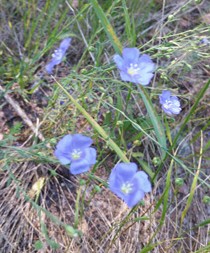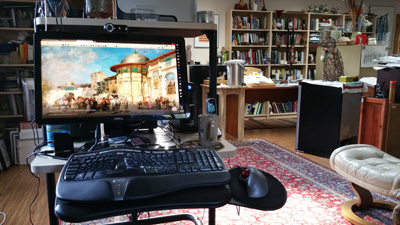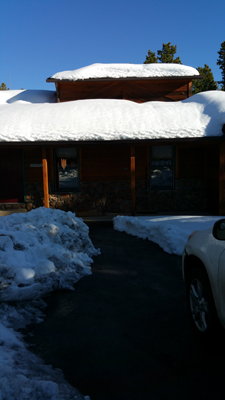Beltane Rushing Waters Moon
 So. Because physics. No black tea up here, at least not at a proper temperature. Thanks Tom and Bill for your help. When you relieve the pressure, the water reverts to the pressure of the air and the temp goes down as it does. Sigh.
So. Because physics. No black tea up here, at least not at a proper temperature. Thanks Tom and Bill for your help. When you relieve the pressure, the water reverts to the pressure of the air and the temp goes down as it does. Sigh.
Black Mountain is covered in cloud, hidden behind an opaque scrim of greyish white. Bishop Berkeley would suggest it’s not there at all, but I think it is. We’ll find out sometime today.
 Went into Kate’s hairstylist with her yesterday and got my ears waxed. Jackie put hot wax on my ears, then pulled it off, removing those hairs that seemed to follow receipt of my Medicare card. This is my second time. She says if we do this often enough, the follicles will not push up hair. I mean, hair on the ears is so last iteration of our species.
Went into Kate’s hairstylist with her yesterday and got my ears waxed. Jackie put hot wax on my ears, then pulled it off, removing those hairs that seemed to follow receipt of my Medicare card. This is my second time. She says if we do this often enough, the follicles will not push up hair. I mean, hair on the ears is so last iteration of our species.
Kate spent the rest of the day at Bailey Patchworkers. This is a sewing group that meets at the Bailey Library. Kate joined in our first year here. Another group with some of the same members, a needleworkers group, invited her to join them. As a result, she’s had two circles of friends here for almost the duration of our time in Colorado. This is a woman who listens to lectures and does counted cross-stitch or needlepoint. She’s sew into it.
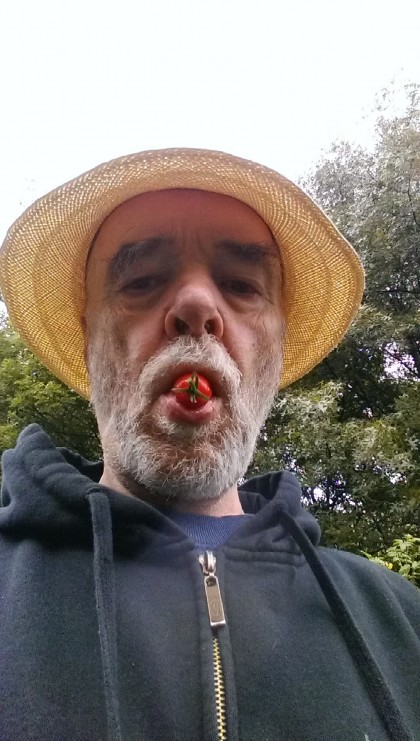 Planted a tomato plant yesterday in a five-gallon plastic bucket. When I opened the bag of garden soil (we don’t have anything a Midwesterner would recognize as soil), the smell of the earth almost made me cry. I miss working in soil, growing plants and my body told me so. A greenhouse went up higher on the priority list.
Planted a tomato plant yesterday in a five-gallon plastic bucket. When I opened the bag of garden soil (we don’t have anything a Midwesterner would recognize as soil), the smell of the earth almost made me cry. I miss working in soil, growing plants and my body told me so. A greenhouse went up higher on the priority list.
I love living at altitude, among the Rockies and all their flora and fauna. See the post below. I also loved living in Andover where horticulture, in retrospect, was so easy. It is possible to recreate that experience in miniature, inside four walls and a roof. I want to do that.

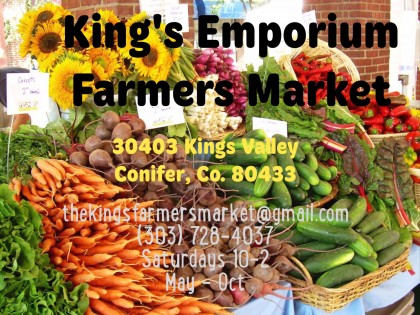
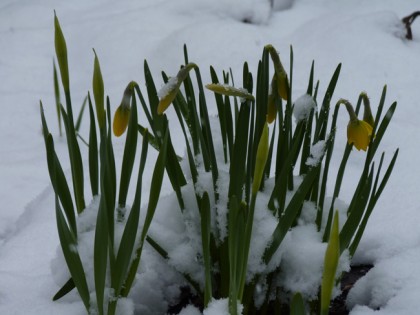
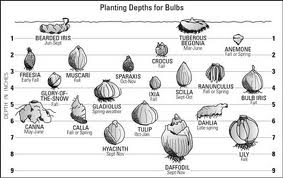 Yet it is not a true analog. Mother earth only seems to defy winter and the fallow time. It is not, in fact, death and resurrection, but a continuum of growth, slowed in the cold, yes, but not stopped forever, then magically restarted. Corms, bulbs, tubers and rhizomes all store energy from the previous growing season and wait only for the right temperature changes to release it. Seeds sown by wind and animal, by human hand are not dead either. They only await water and the right amount of light to send out roots and stalks.
Yet it is not a true analog. Mother earth only seems to defy winter and the fallow time. It is not, in fact, death and resurrection, but a continuum of growth, slowed in the cold, yes, but not stopped forever, then magically restarted. Corms, bulbs, tubers and rhizomes all store energy from the previous growing season and wait only for the right temperature changes to release it. Seeds sown by wind and animal, by human hand are not dead either. They only await water and the right amount of light to send out roots and stalks.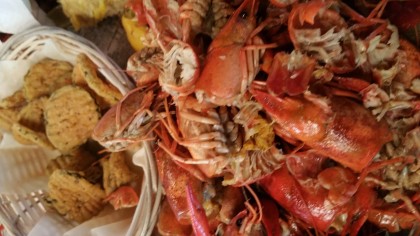 I prefer the actual analog in which human and other animals’ bodies, plant parts and the detritus of other kingdoms, all life, return their borrowed materials to the inanimate cache, allowing them to be reincarnated in plant and animal alike, ad infinitum. Does this deny some metaphysical change, some butterfly-like imaginal cell possibility for the human soul? No. It claims what can be claimed, while reserving judgment on those things that cannot.
I prefer the actual analog in which human and other animals’ bodies, plant parts and the detritus of other kingdoms, all life, return their borrowed materials to the inanimate cache, allowing them to be reincarnated in plant and animal alike, ad infinitum. Does this deny some metaphysical change, some butterfly-like imaginal cell possibility for the human soul? No. It claims what can be claimed, while reserving judgment on those things that cannot. It is spring, I think, that gives us this hope, no matter how faint, that death might be only a phase change, a transition from this way of becoming to another. It’s possible.
It is spring, I think, that gives us this hope, no matter how faint, that death might be only a phase change, a transition from this way of becoming to another. It’s possible.


 Palisade, Colorado has had a bumper peach harvest. There is a small area on the Western Slope that has an ideal peach growing microclimate. They have other crops, too: lavender, apples, sweet corn, strawberries and vegetables. The newspapers have carried photo spreads of workers in the orchards with peach baskets gently picking and placing the delicate fruit into baskets. Back in Andover, this time of year, the honey harvest would be in, the raspberries just beginning. I would be out planting garlic and pulling the last plantings of carrots, beets, leeks and onions. This is the peak harvest season, when the land and its workers combine to feed millions, even billions of people.
Palisade, Colorado has had a bumper peach harvest. There is a small area on the Western Slope that has an ideal peach growing microclimate. They have other crops, too: lavender, apples, sweet corn, strawberries and vegetables. The newspapers have carried photo spreads of workers in the orchards with peach baskets gently picking and placing the delicate fruit into baskets. Back in Andover, this time of year, the honey harvest would be in, the raspberries just beginning. I would be out planting garlic and pulling the last plantings of carrots, beets, leeks and onions. This is the peak harvest season, when the land and its workers combine to feed millions, even billions of people.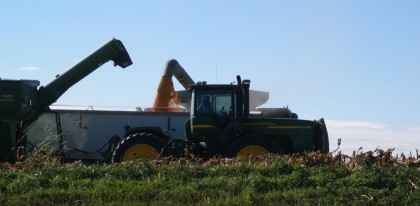 Being so far removed from farms and large truck gardens feels strange to this former Midwestern lifer. No more so than in this long harvest season. Corn pickers and combines have begun to roll through fields. The state fairs have swept up 4-H’er raised cattle, pigs, sheep, chickens. The vegetable harvest has peaked. Self pick apple orchards have hayrides and cider stations set out. Not there, though.
Being so far removed from farms and large truck gardens feels strange to this former Midwestern lifer. No more so than in this long harvest season. Corn pickers and combines have begun to roll through fields. The state fairs have swept up 4-H’er raised cattle, pigs, sheep, chickens. The vegetable harvest has peaked. Self pick apple orchards have hayrides and cider stations set out. Not there, though.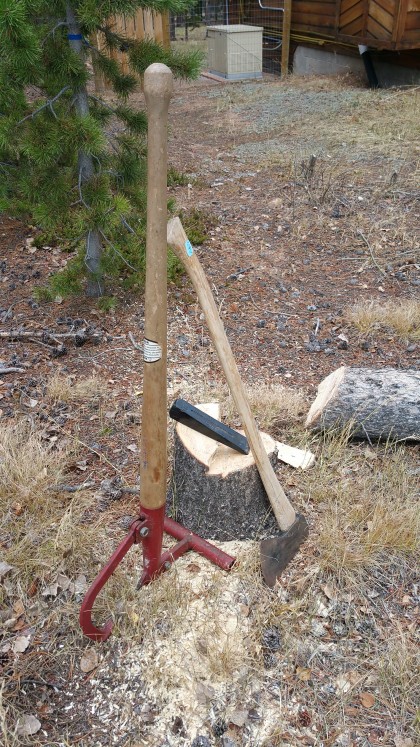 Labor Day does mark the winding down of one season long harvest up here: tourist dollars from Denver folks. July and August are the heaviest tourist months for our favorite mountain town, Evergreen. We’re not a winter tourist destination, at least not like the ski resorts, so the roads will have less traffic and fewer visitors in Evergreen’s restaurants.
Labor Day does mark the winding down of one season long harvest up here: tourist dollars from Denver folks. July and August are the heaviest tourist months for our favorite mountain town, Evergreen. We’re not a winter tourist destination, at least not like the ski resorts, so the roads will have less traffic and fewer visitors in Evergreen’s restaurants.